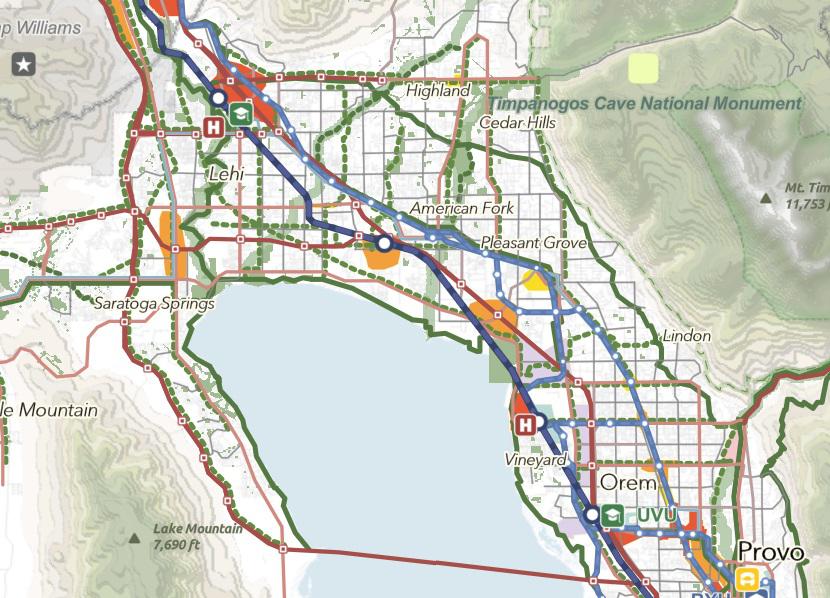The regional transportation plan developed by the Mountainland Metropolitan Planning Organization balances growth, a vibrant economy, and future transportation needs.
Metropolitan Planning
Mountainland Metropolitan Planning Organization (MPO) has the task of planning for urban Utah County regional transportation needs. Located at the southern end of the Wasatch Front region of Utah, the MPO encompasses the rapidly growing Provo/Orem Urbanized Area and includes all 25 Utah County municipalities and contiguous unincorporated areas. Urbanization and the locations of major transportation facilities are constrained by physical boundaries, including steep mountain terrain to the east and west and the large, centrally located Utah Lake. The urban area is roughly bisected by I-15, the only freeway currently within Utah County.
The MPO creates a forum, bringing together urban leaders with state and federal transportation officials, opening dialogue, and providing a process for all to be involved in planning and funding the area's transportation needs. MAG has a strong history of working together with stakeholders and accomplishing results.
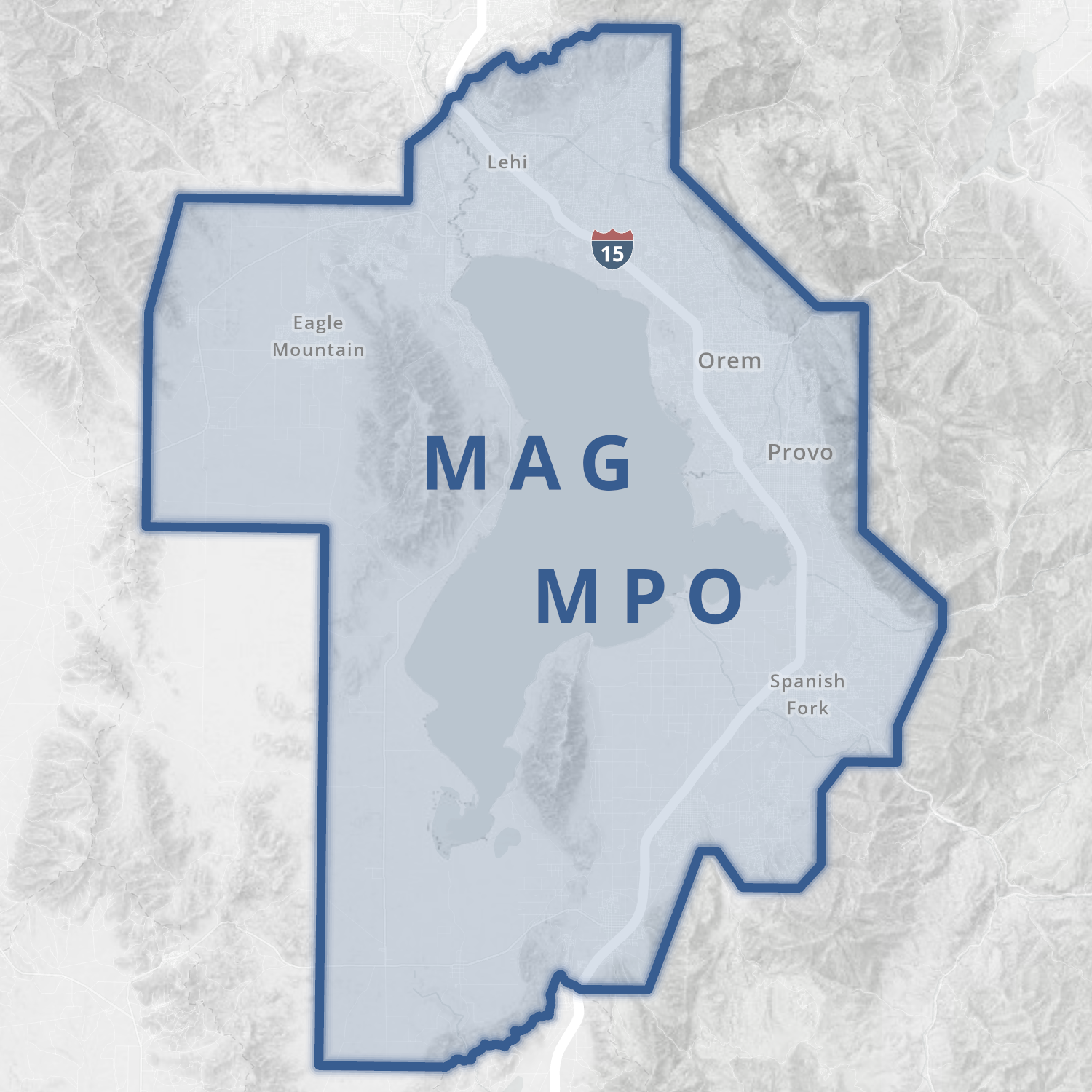
Plan Development Timeline
Extensive work and coordination with planning partners and the public is conducted during the 4-year development period to create the RTP
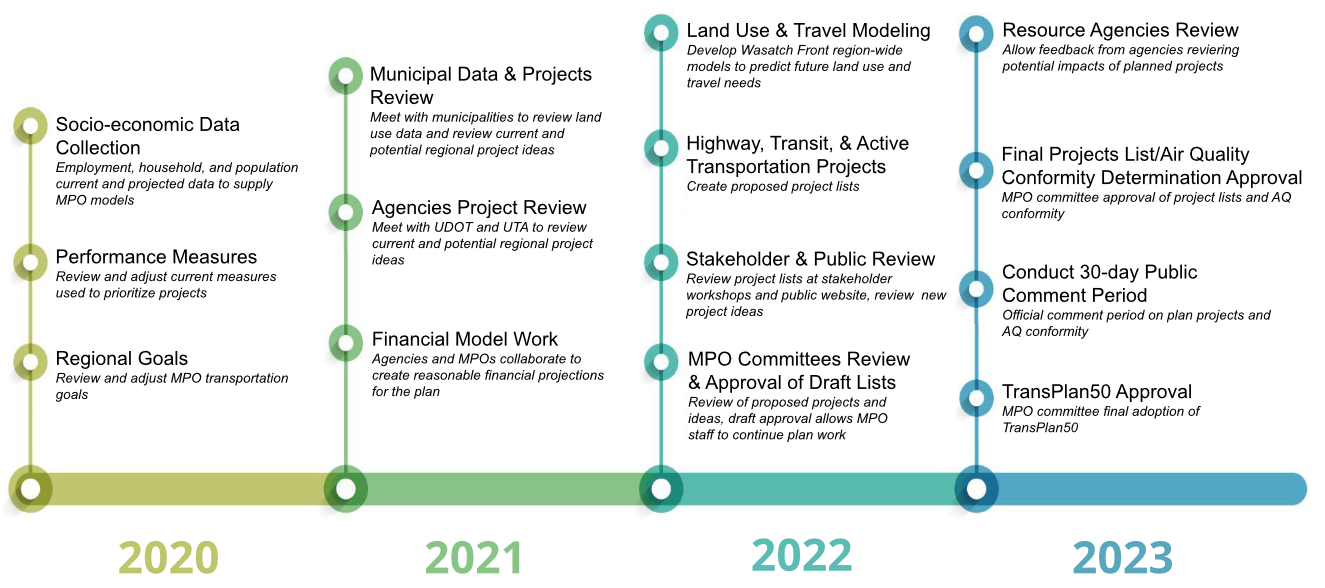
Population Growth
A GROWING REGION
Historically, population growth in Utah County has been robust, rising by 35 percent in each of the last two decades and surpassing one-half million people in 2009. More recently, the Provo/Orem area was the fourth fastest-growing metro area in the country, with the population now exceeding 700,000.
While the mainly rural transportation system had been over-taxed and unable to sustain such rapid growth, early in the last decade, the state and county invested nearly $4 billion in highway and rail projects, making a significant impact towards easing congestion and creating better connectivity.
The cities of Provo and Orem have always been the urban core of Utah County, but this is changing. The two largest metropolitan areas in the state, Salt Lake City and Provo/ Orem converge at the Point of the Mountain, creating a natural center for high growth in both jobs and population.
Growth, based on state population, household, and employment projections, dictates where the regional transportation system needs to expand.
Utah County has the highest population growth rate in the Wasatch Front Region...
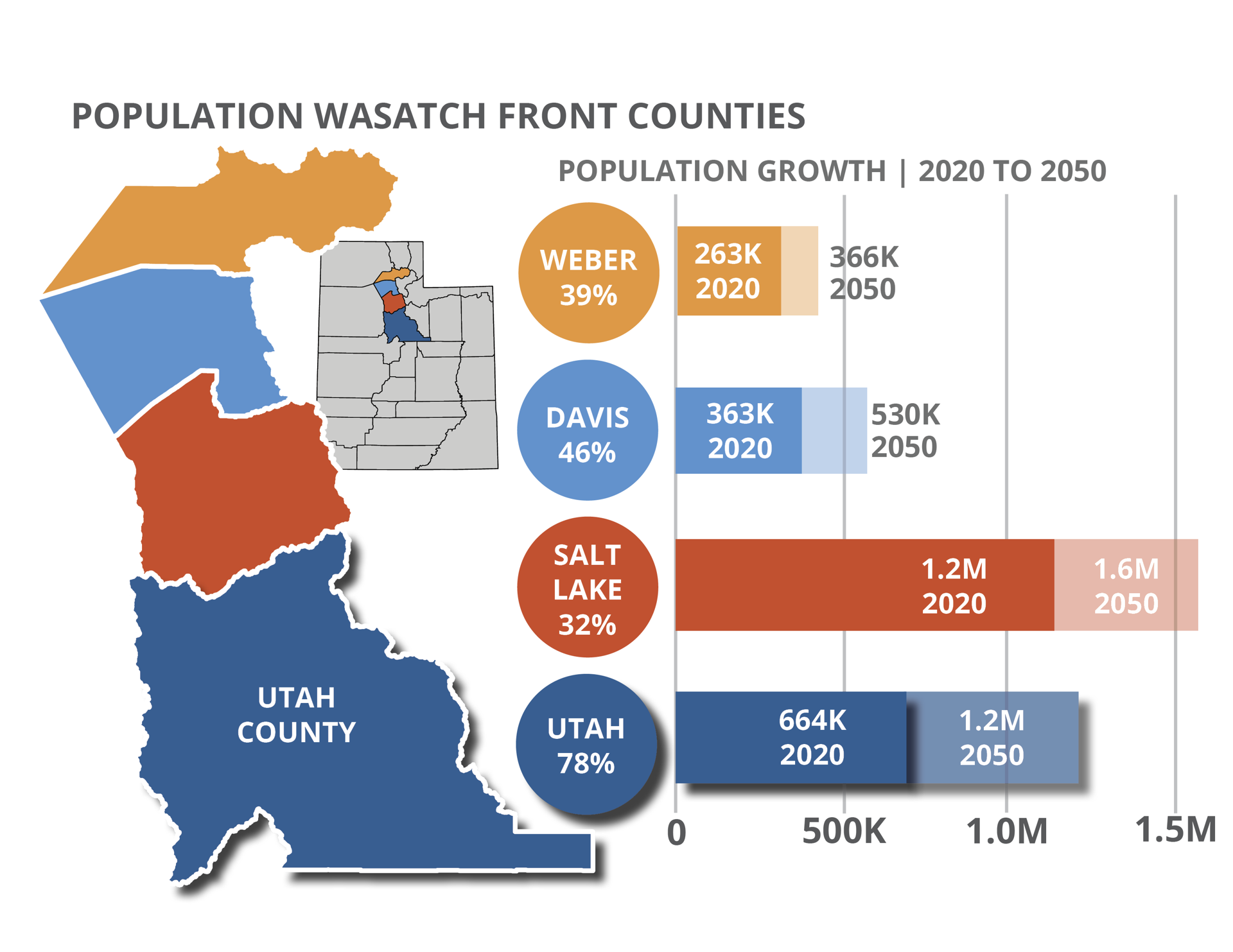
Growth, historically and in the future, is aimed southward toward Utah County...
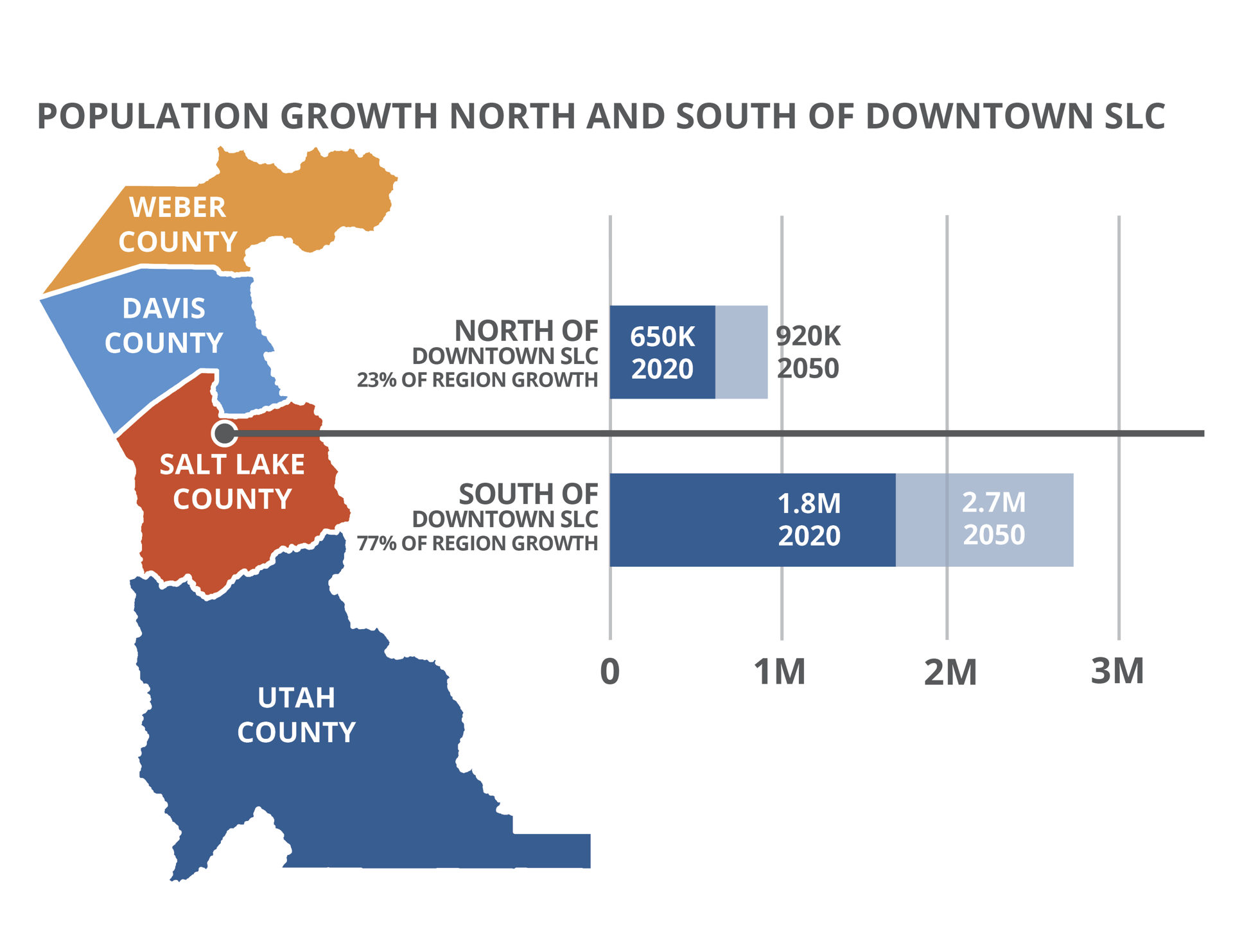
Over 700,000 people live in Utah County today, growing to 1.2 million people in 2050......
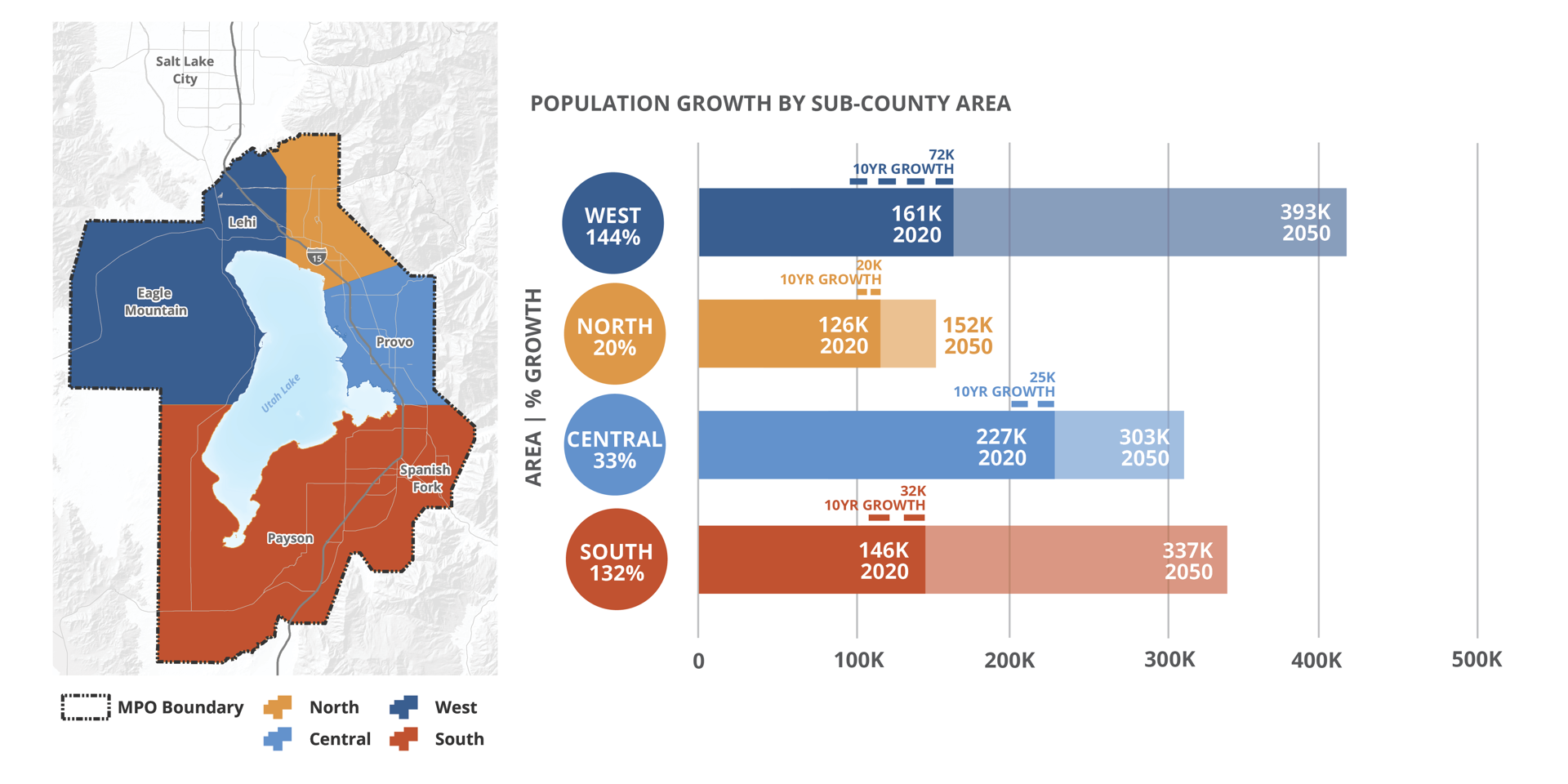
WEST AREA
Between 2000 and 2020, the West Area (including Lehi, Eagle Mountain, and Saratoga Springs) was the epicenter of statewide population growth, adding more than 150,000 people. By 2050, the future population will reach 393,000, equaling Utah County’s total population around the 2002 Olympics.
NORTH AREA
This area includes American Fork, Highland, and Pleasant Grove. With less developable land and high real estate values, it added over 50,000 new people between 2000 and 2020, but only 36,000 new people will be added between today and 2050.
CENTRAL AREA
Provo, Orem, and the high-growth area of Vineyard encompass the Central Area. Most of Provo and Orem are developed, established areas that have increased in density since 2000, adding 36,000 new people. Another 75,000 people are forecasted to move to the area, with increased density and Vineyard building up and out.
SOUTH AREA
The largest area geographically with densities mostly at rural values today, the South Area is also growing. Most of the 75,000 new residents since 2000 pushed development outward from the historic city cores. The area is forecasted to add another 191,000, increasing to 377,000 by 2050.
Land use and travel demand both dictate where transportation projects are needed.........
